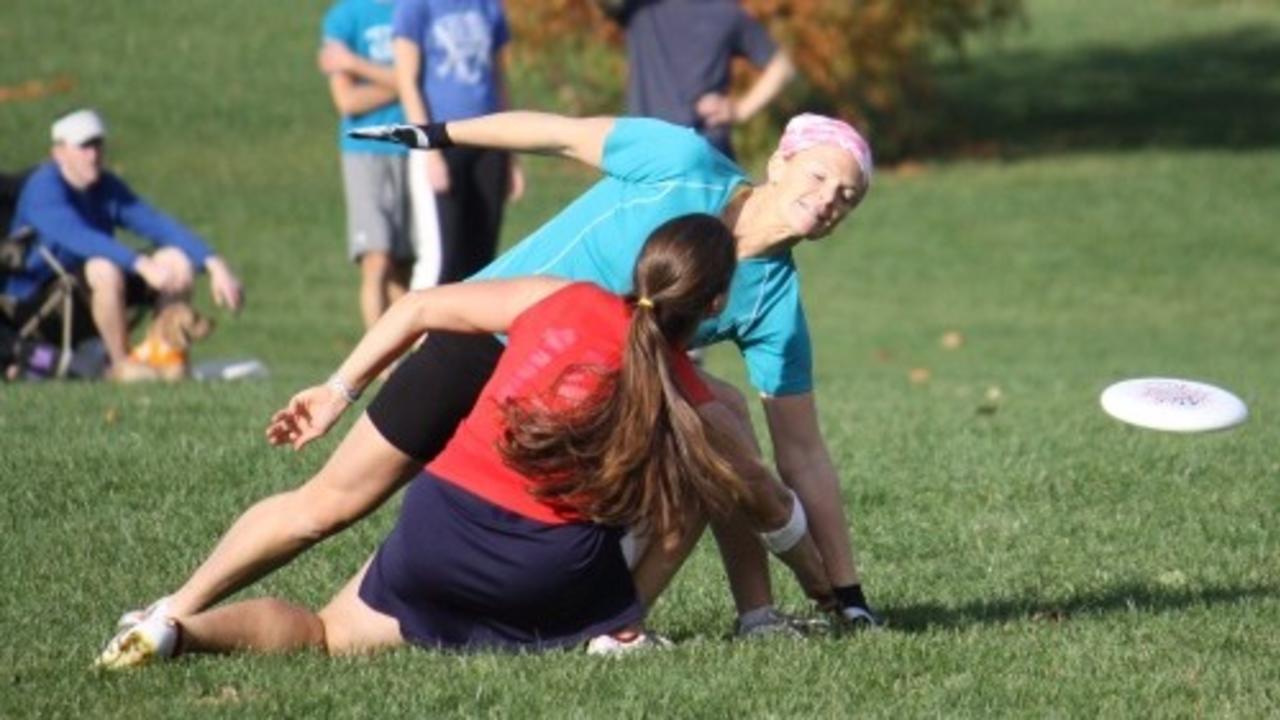One Step to Better Throwing Practice

Years ago when I visited the University of Illinois, I was fortunate enough to have a chat with a former professor of mine and long time motor skills researcher, Les Carleton. We discussed the fact that despite advances in motor skills research, much of coaching in the US is done using the same methods of instruction as those used in the 1930’s.
I asked my professor friend, “What concepts in motor skills research, if better understood by coaches, would have the greatest impact on performance?” The two themes emerged from our discussion were the role of deliberate practice, and the importance of variability in practice.
Variability in practice simply means that every practice trial is in some way different. Many teams I have observed begin their practices with an orderly throwing routine in which partners throw ten backhands, ten forehands, ten hammers, etc. This is an example of one of those things that coaches pass down to one another even though this might not be the best way to practice.
Variability in practice is especially important for skills such as throwing a disc because every throw on the field is unique depending on wind conditions, the position of the mark, etc. However, even in a skill such as free throw shooting, which is the same every time, it would be a mistake to stand at the free throw line and repeat the same action over and over again.
As professor Carleton explains, when a person is ready to execute a motor skill, the brain creates a plan of action and then executes that plan. The plan includes the order and intensity of muscle activation in the body. If you attempt the same exact skill over and over, you have only asked the brain to create a plan once. Even if you execute ten free throws, you have really only done one true practice trial! This concept is known as contextual interference.
The concept of contextual interference has been examined in a large body of research. The research shows that performance during practice is much worse for those doing randomized rather than repeated trials.
Most likely this is the reason people prefer to practice throws in blocks of the same type. Alternating between types of throws makes all the throws look worse. What coach wants to see that? However, studies show that learning retention is better for those who use randomized practice. Perhaps even more important, performance on transfer tests is better for those who use randomized practice.
Performance on a transfer test measures how well the person can execute a related but slightly different skill than the one being practiced. Certainly this is applicable to ultimate where an endless variety of throws are needed on the field!
The desire for an orderly throwing routine at practice is understandable. Some players do not do well with unstructured practice and will lose focus without clear instructions.
One way to increase the variability is to simply have players rotate through the types of throws in twos or threes rather than ten of each.
Three to five repetitions of the cycle will give throwers the same number of overall trials and ensure that they are practicing all of their throws. Another alternative is to instruct players to make something different about each throw. A different release point, a different angle, or a different fake preceding each throw will add variability.
Players can be less motivated to do randomized practice because their throws will not be executed as well as they’re used to. Always remember that the purpose of practice is not to look good in practice, but to perform well in games!
Want Better Throws? Sign Ip for Updates on Our New Project! I’ll send you more information about how to develop better throws and a more effective throwing practice. You'll have a say in the types of throwing program we'll create, and you'll get fist dibs when it's available!

